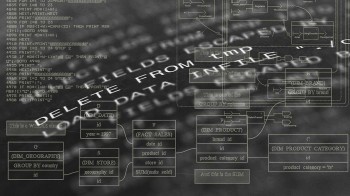You are hopefully familiar with the three words in the title, as you are increasingly being guided by them on an hourly (if not more frequent) basis, whether you are searching for information on Google, booking travel or accommodation, or calling an Uber. Entirely new businesses now exist based solely on our ability to process huge quantities of data and make inferences based on what we find. Without algorithms and without artificial intelligence, many of the familiar applications on your smartphone would simply not exist.
Unfortunately, these terms are largely misunderstood and this causes fear that computers could soon steal all our jobs and take over the world. The reality is a lot different. In his best-selling book Homo Deus – A brief history of tomorrow, Yuval Noah Harari reminds us that an algorithm is nothing more than “a methodical set of steps that can be used to make calculations, resolve problems and reach decisions”. Without human beings to devise such algorithms, even the most potent processing power at our disposal is useless.
It’s telling that practitioners talk about machine learning rather than artificial intelligence, placing the emphasis on the human teaching the machine, rather than the almost paradoxical notion of the machine acquiring, seemingly out of nowhere, an intelligence that is artificial. In machine learning, algorithms (devised and coded by humans) are put to work on vast quantities of data (made available by human beings, or also gathered and cleaned using code devised by humans) to look for patterns and classifications and ultimately make decisions based on their findings. Far from being a dark art beyond the comprehension of the average human being, it is a field that is surprisingly accessible – to the extent that I have been able to learn all about it and devise and program my own algorithms in my spare time.
I can understand if you have spent the last three paragraphs wondering what all this has got to do with watches. When I initially started studying machine learning, it was to do something that was completely unrelated to my work. But I quickly realized that the skills I was learning could easily be applied to any field. I have written short programs to sort out the winners in our monthly competitions (filtering those who answered the questions correctly and choosing a winner at random) and monitor the activities of a number of watch-related social media accounts. Watch brands could use such expertise to improve their relationship with their customers. Armin Strom, for example, has already paved the way with its watch configurator, which helps to reveal trends and customer demands for materials and colours.
The blockchain is a more recent development and has tended to suffer in the shadow of the cryptocurrencies that it underpins, experiencing a boom as Bitcoin reached its heady peak towards the end of last year, only for people to lose interest as cryptocurrency values subsequently crashed. But the underlying technology, the distributed ledger, offers great opportunities for the watch industry, where authentication is a major issue. Favre-Leuba’s adoption of WISeKey’s new blockchain-backed WiseAuthentic solution for authentication means that a watch’s history can be traced back to the moment it left the workshops in a database that is not just the preserve of a single entity such as the brand. Any ownership claims about a watch can thus be easily verified. One Favre-Leuba watch offered for sale online has already been identified as stolen using this technology and returned to its rightful owner.
My message, in a nutshell, is that we should not be propagating the notion that these things are a threat. It’s far better to take the time to understand them, and their potential, and to see how we can benefit from them. The CEO of Société Générale, a bank, won plaudits when he said he had taken the time to learn how to program in Python. I have done the same and it has benefited me immensely. I wonder how many other people in the watch industry could say the same?








